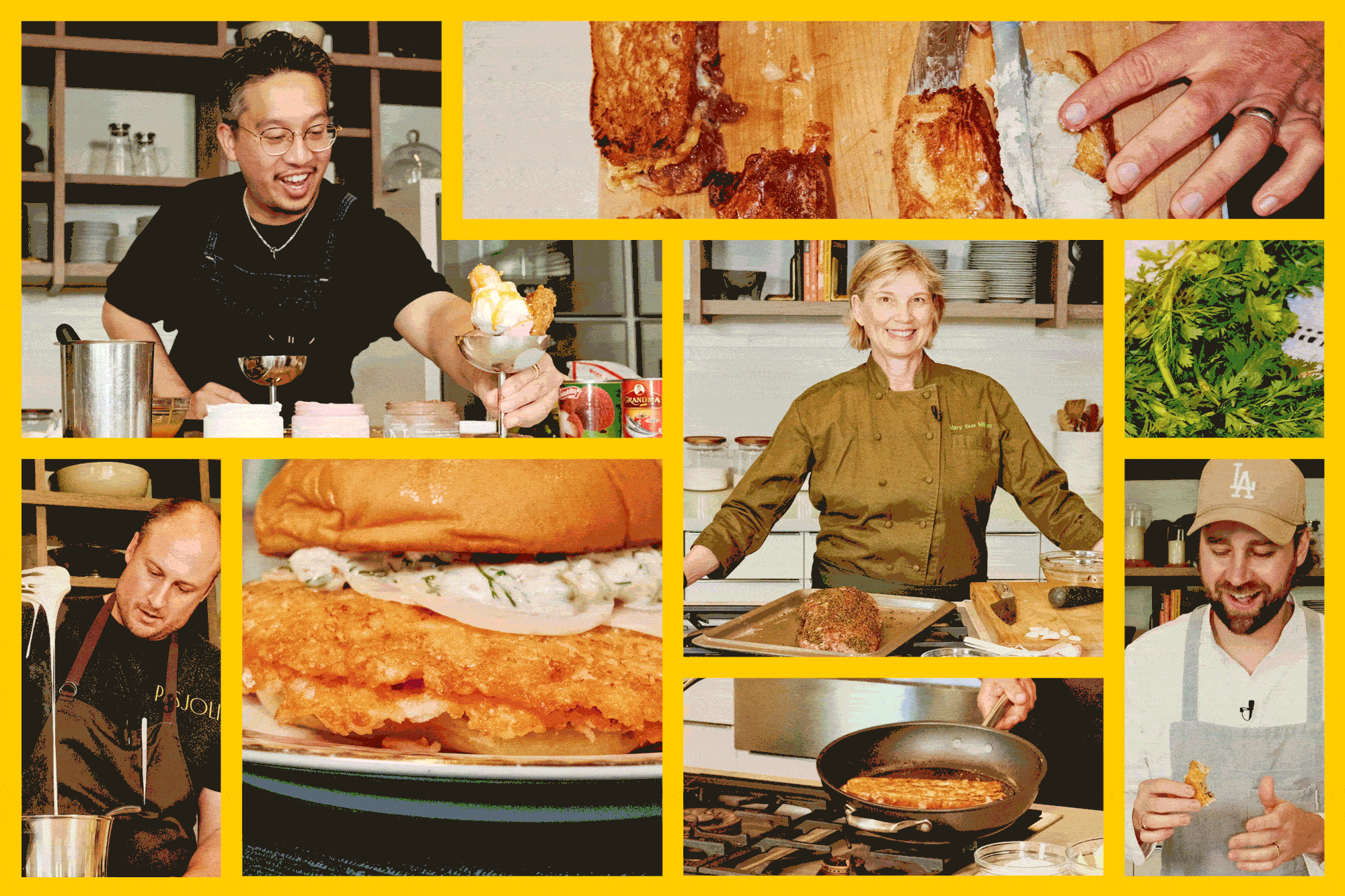They Strive for a Fine Mess at Sea : Sailor-chefs: At the Navy’s only advance culinary school, seamen add skills in cake decorating and garnishing to a repertoire that includes making a good stew.
SAN DIEGO — “No guts, no glory,” said former Navy Master Chief Petty Officer Romeo Basmayor as he wielded a knife in front of 20 sailors.
With surgical precision, he attacked a turnip, deftly carving it into a pristine white rose.
“When you’re out on a six-month deployment aboard a destroyer, don’t just dump out all your parsley,” Basmayor ordered. “Because you won’t be getting any more.”
At the Navy’s only advanced culinary school, 25 students hone specialized skills such as cake decorating, garnishing and ice carving. They are the Navy’s best and brightest cooks, who earn the cumbersome title: mess management specialists. They can whip up beef stew for 300 or bake Virginia ham with pineapple-raisin sauce for an admiral and visiting dignitaries.
A Navy vessel “is a big city that floats, so you need people with different specialties,” said Lt. Ken Luchka, spokesman for the Naval Training Center, which hosts the advanced food preparation school as well as boot camp for thousands of sailors.
For sailor-chefs, kitchens of the sea pose unique challenges. Mike Burkhart, 19, had just made nine coconut cream pies when his submarine abruptly dived, sending the pies flying.
“We’re supposed to get warned before they do that,” said Burkhart, an Orrville, Ohio, native stationed aboard the James Madison.
Burkhart and others come to the school in San Diego because they love their trade, despite the aggravations. Most sailor-chefs acknowledge that Navy cuisine suffers an image problem and that crews usually call cooks “stew-heads.”
“Cooks have a really bad reputation--it’s come with the years,” said Colleen Larreau, a 28-year-old New Jersey resident who used to cook for retired Adm. William J. Crowe Jr., former Chairman of the Joint Chiefs of Staff. “The Navy is trying to teach more pride and professionalism.”
Each year, about 300 sailors graduate from the advanced food preparation school. In groups of 25, they attend the three-week school that includes classes in Italian and French cooking, and teaches how to manage a kitchen aboard a seabound vessel for up to six months. When they cook, they must pay attention to nutrition, taste, cost, visual appeal, color scheme and morale.
“The further you are from payday, the more you need to serve morale-boosting food,” said Lt. Cmdr. John Pemberton, director of supply schools at the training center.
For most of the cooks, the reward is in the creation and the appreciation of the meal. “It really gets me going when someone comes back and says ‘great chow,’ ” said Walt Berrey, a 26-year-old Washington native who cooks aboard the submarine Georgia.
Others rein in their creative instincts to cater to the more traditional palates of crews. And they all more or less follow the prescribed recipes devised by the Armed Forces Recipe Service.
“Most people in the Navy grew up with overcooked green beans. So I won’t cook al dente, “ said Regis McDonald, 32, a 12-year Navy man from Louisville, Ohio, referring to chewy food. “You try subtle changes--you do a little at a time.”
For sailor-chefs, garnishing, ice carving and cake decorating are one of their few chances at culinary creativity.
Shawn Burns, a 19-year-old from Minnesota, gazes at an undecorated cake like an artist looking at an empty canvas. “I look at it and think of what I can do,” said Burns, who adds that an award-winning cake takes about two hours to decorate. Burns won four first-place awards in local Minneapolis contests recently.
Burns and others sometimes buck their families when they join the Navy and become cooks. “My family was shocked,” said Burns, whose father had hoped he would follow in his footsteps and become a foreman in a utility plant. “I say that’s just not me.”
About 90% of the school’s graduates end up on vessels at sea. But most would rather be on shore and close to their home town, Pemberton said. “We say, ‘Join the Navy and see the world.’ Most students don’t want to do that.”
Only those at the top get to choose their assignments. Aside from short postings, duty aboard the newer vessels like Aegis cruisers are usually popular because of the more modern and spacious kitchens.
The school makes an effort to bolster the image of Navy cuisine, dubbed “mess,” by instilling pride in cooks, officials say. Some, including cooks, say it’s an uphill battle. But those at the school are confident that they will win.
“In the old days, only the captains’ food was garnished. When it comes to garnishing, if it looks good, I bet it tastes good,” Basmayor said. “The majority of people eat with their eyes.”
More to Read
Eat your way across L.A.
Get our weekly Tasting Notes newsletter for reviews, news and more.
You may occasionally receive promotional content from the Los Angeles Times.










